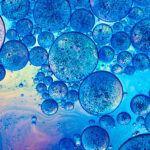High numbers of youth report using prescription opioids in the past year

A new analysis of data from the National Survey on Drug Use and Health finds a surprisingly high prevalence of prescription opioid use among youth. As recently as 2015–2016, 21 percent of adolescents and 32 percent of young adults said they had used these drugs in the past year.
Nearly 4 percent and 8 percent, respectively, reported misusing opioids. Findings were published this week in PLoS Medicine.
“The percentages were higher than we expected,” says Joel D. Hudgins, MD, of Boston Children’s Hospital’s Division of Emergency Medicine and the paper’s first author. “They really highlight how common use of prescription opioids is in this vulnerable population.”
Hudgins, with coauthors John J. Porter, MBA, and Michael C. Monuteaux, ScD, and senior author Florence T. Bourgeois, MD, MPH, analyzed data from 27,857 adolescents (ages 12–17) and 28,213 young adults (18–25) in the U.S.
Of youth who reported misusing prescription opioids, 57 percent were obtaining them from friends or relatives (often for free, sometimes bought or stolen) versus only 25 percent from healthcare providers.
“In previous studies in adults, opioids were more commonly obtained from a physician,” Hudgins says. “Our findings show that the focus of prevention and treatment should include close friends and family members of adolescents and young adults, not simply prescribers.”
Respondents who misused opioids, particularly the young adults, often reported having used other substances (cocaine, 36 percent; hallucinogens, 49 percent; heroin, 9 percent; inhalants, 30 percent). At least half had used tobacco, alcohol, or cannabis in the past month.
A vulnerable group
It’s well known that teens and young adults are especially prone to becoming addicted once exposed to opioids, so the degree of exposure indicated by the study is worrisome. The findings complement the team’s earlier study, which reported concerning rates of opioid prescribing to youth aged 13-22 in the emergency department and certain outpatient clinics.
“Given these rates of opioid use and misuse, strong consideration should be given to screening adolescents and young adults for opioid use when they receive care,” says Hudgins.
The study was supported by the Burroughs Wellcome Fund (grant number 1017627).
Related Posts :
-

Promising advances in fetal therapy for vein of Galen malformation
In 2024, Megan Ingram* of California and her husband were preparing for the birth of their third child when a 34-week ...
-

The hidden burden of solitude: How social withdrawal influences the adolescent brain
Adolescence is a period of social reorientation: a shift from a world centered on parents and family to one shaped ...
-

A toast to BRD4: How acidity changes the immune response
It started with wine. Or more precisely, a conversation about it. "My colleagues and I were talking about how some ...
-

A unique marker for pericytes could help forge a new path for pulmonary hypertension care
Pulmonary arterial hypertension (PAH) is a rare condition that’s difficult to treat. The hallmarks of the disease — narrowing of ...





